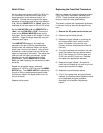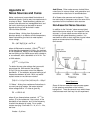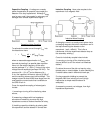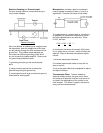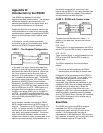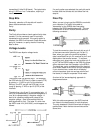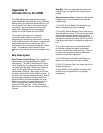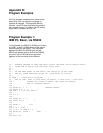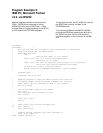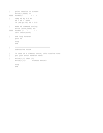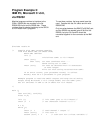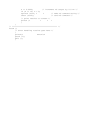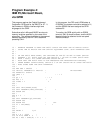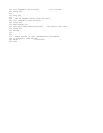41
Appendix C:
Introduction to the GPIB
The IEEE-488 Standard specifies the voltage
levels, handshake requirements, timing, hardware
details, pinout and connector dimensions for a 16
line, bit parallel bus. Many instruments may be
connected in series to communicate over the
same cable. Because the bits are passed in
parallel, the GPIB is faster than the RS232.
The controller (generally your computer)
coordinates data transfer on the bus by
designating all participating instruments (including
itself) as either a talker or a listener. Listeners can
receive data placed on the bus by the Talker.
Devices can have the capacity to operate in either
mode. The address of each device is set by
switches in the device and must be between 0 and
30.
Bus Description
Byte Transfer Control Group. This consists of 3
negative logic lines that implement the GPIB
handshaking. The NRFD (Not Ready For Data)
line is held low by any designated listener who is
not ready to accept data. When every listener is
ready, the line goes high and the talker may
release data to the bus. After data is on the bus,
the talker pulls the DAV (Data Valid) line down. At
this point, each listener retrieves the data. Before
and during the retrieval of the data, the listener
holds the NDAC (No Data Accepted) line down.
When every listener has received the data, the
NDAC line goes high, allowing the talker to
release the DAV line high. Finally, the listener
pulls down the NDAC line until another transfer is
initiated.
Data Bus: There are eight data lines which use
negative logic and pass the bits of each byte in
parallel.
General Interface Lines: These five lines operate
independently of the handshake lines and use
negative logic.
1) The EOI (End or Identify) line is used by the
talker to designate the end of message.
2) The SRQ (Service Request) line is used by any
device to ask for service. The controller can serial
poll each device (each device returns an 8 bit
status byte) to determine who needs attention. It
can also do a parallel poll using the EOI and ATN
lines where each device is assigned a single data
line.
3) The ATN (Attention) line makes both talkers
and listeners accept information and passes
control of the DAV line to the controller. This line
is used by the controller to identify talkers and
listeners through their addresses.
4) The REN (Remote Enable) line changes the
status of an instrument from local to remote.
5) The IFC (Interface Clear) line clears the bus of
all data and activity.
Though GPIB is a very powerful interface, strict
protocol must be observed for it to operate
successfully.





